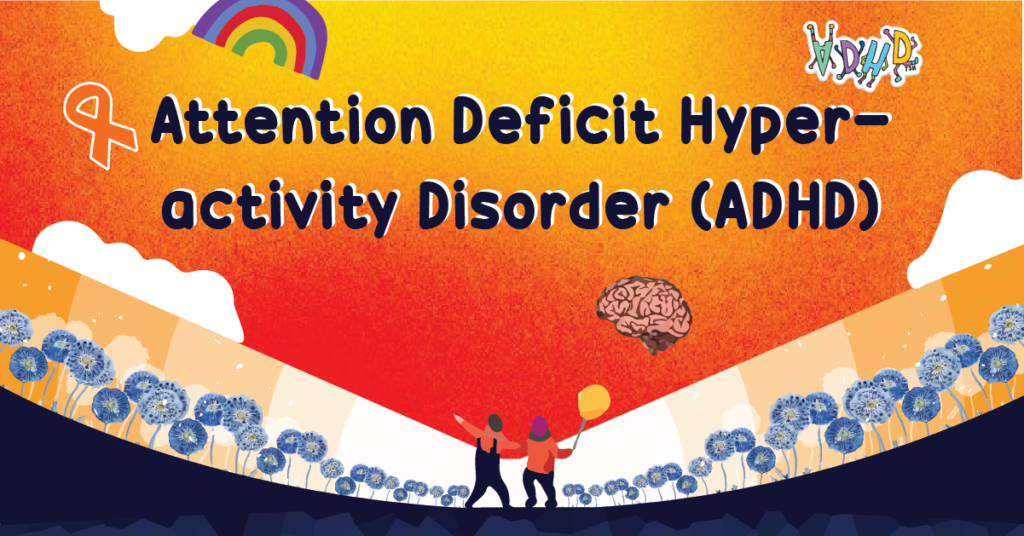What is ADHD?
Attention deficit hyperactivity disorder (ADHD) is a neurodevelopmental disorder that affects people’s behaviour. It is usually first diagnosed in childhood and often lasts into adulthood. Children with ADHD may have trouble concentrating, controlling impulsive behaviors, or be overly active.
What Are the Signs of ADHD?
The symptoms of ADHD in children and teenagers are well defined, and they’re usually noticeable before the age of 6. The symptoms continue, can be severe, and can cause difficulty at school, at home, or with friends. A child with ADHD might:
- Having a short attention span and being easily distracted
- Appearing forgetful or losing things
- Being unable to stick to tasks that are tedious or time-consuming
- Appearing to be unable to listen to or carry out instructions
- Having difficulty organising tasks
- Inattentiveness, hyperactivity and impulsiveness
- Being unable to sit still, especially in calm or quiet surroundings
- Excessive physical movement
- Acting without thinking
- Little or no sense of danger
These symptoms can cause significant problems in a child’s life, such as underachievement at school, poor social interaction with other children and adults, and problems with discipline.
Types of ADHD
ADHD is divided into three main types:
1. Predominantly Inattentive Presentation
It is hard for the individual to organize or finish a task, to pay attention to details, or to follow instructions or conversations. The person is easily distracted or forgets details of daily routines.
2. Predominantly Hyperactive-Impulsive Presentation
The person fidgets and talks a lot. It is hard to sit still for long. Smaller children may run, jump or climb constantly. The individual feels restless and has trouble with impulsivity. Someone who is impulsive may interrupt others a lot, grab things from people, or speak at inappropriate times. It is hard for the person to wait their turn or listen to directions. A person with impulsiveness may have more accidents and injuries than others.
3. Combined Presentation
Individuals with combined-type ADHD display a mixture of all the symptoms outlined above.
Because symptoms can change over time, the presentation may change over time as well.
What Causes ADHD?
The exact cause of ADHD remains unknown, but current research shows that genetics play a role in the development of ADHD.
In addition to genetics, other factors that researchers are looking into include:
- Brain injury
- Exposure to environmental risks (e.g., lead) during pregnancy or at a young age
- Alcohol and tobacco use during pregnancy
- Premature delivery
- Low birth weight
How Is ADHD Diagnosed?
Children usually display symptoms before the age of 7. There is no single test to diagnose ADHD. Deciding if a child has ADHD is a process with several steps. One step of the process involves having a medical exam, including hearing and vision tests, to rule out other problems with symptoms like ADHD. Diagnosing ADHD usually includes a checklist for rating ADHD symptoms and taking a history of the child from parents, teachers, and sometimes, the child.
An initial diagnosis may reveal one type of ADHD. But symptoms can change over time. This is important information for adults, who may need to be reevaluated.
How Is ADHD Treated?
After you’ve been diagnosed, there are a number of treatment options available. In most cases, ADHD is best treated with a combination of behavior therapy and medication. The primary goal of treatment is to manage ADHD symptoms and to promote positive behaviors. Good treatment plans will include close monitoring, follow-ups, and making changes, if needed, along the way.
It’s important to work closely with your doctor to determine the best treatment or combination of treatments and the right dosage to help your ADHD.
If You’re Concerned
ADHD is a lifelong condition for many people. You may be able to manage ADHD with therapeutic options, medication, or both. But treatment isn’t a one-size-fits-all approach. It’s important to work with your doctor if you think your treatment plan isn’t helping you.
Visiting our site today, share your concerns and what you’re seeing. There are many ways to support kids diagnosed with ADHD – helping them feel less alone and connect to the world.
So welcome to Dawn Bridge. We’re thrilled that you’ve joined us on this journey.

